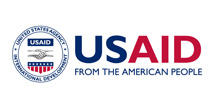Economic linkages between pastoralists and farmers
Project title: Economic Linkages between Pastoralists and Farmers in Ethiopia: Case Study Evidence from Districts in Afar /Amhara and Oromia Regional States
Lead researcher: Dr. Samuel Gebreselassie, Research Fellow, Ethiopian Economics Association
Collaborators
- Nuredin Juhar – Debreberhan University
- Amsalu Almaw – Debreberhan University
- Anniley Engidawork – Debreberhan University
- Ketema Abdisa – Bule Hora University
- Negassa Mekona – Bule Hora University
Research report – download the research report samuel-gebreselassie-et-al-economic-linkages
Research summary
This research was conducted in two purposively selected districts in Amhara and Afar regions and in one district of the Borena zone of Oromia region, and is concerned with the integration of lowland and highland economic systems in the vicinity of selected pastoral areas. It tries to find out the economic interactions between pastoralists and smallholder agriculturalists involving agricultural economic consequences. It aims to isolate and quantify the different types of economic linkages and interactions found between the two communities (living in the adjacent areas) and discuss the characteristics of the identified linkages and their importance in advancing the economy and the coexistence of the two systems. The study also tries to find out more about the internal and external factors that undermine the nature and intensity of economic linkages and the interactions between the two livelihood systems.
It is important to note the difference with this study and many others studies that focus on how the processes of incorporation of pastoral livelihoods are intensifying, or how wider economic processes affect pastoral areas and pastoral livelihoods. Such studies deal with the connections between pastoral areas and wider national and regional (and global) processes, whereas this study is centered only on economic linkages and transactions of pastoralists and sedentary farmers residing in their nearby areas. Understanding the various mutual linkages and their interdependence, and the reasons and motives behind these linkages (or the lack of them), is expected to provide a basis for discussion and debates pertaining to future development interventions targeting the interface of the economies of the two communities. This will also help in challenging the long-held perception of pastoralist livelihood systems as being economically isolated and contributing little to economies outside of the lowlands in general, and nearby adjacent areas in particular.
The study used both primary and secondary sources of data and employed a range of data collection methods. These included a desk review of literature, key-informant interviews and focus group discussions (among households, traders, community leaders, youth, elders etc.) and direct observation (of market areas etc.). In terms of data analysis, the study employed descriptive and narrative analysis methods. The study considered three types of economic linkages or transactions. The first category looked at exchange of agricultural products, like food crops and livestock, produced by one of the communities. Secondly, the transactions of factors of production that might include labor, oxen/draft power, farmland etc. supplied by one of the communities and used by the other for production purposes. And a third group consisting of exchange of services that have economic consequences, for example petty trading (food, drinks, etc.), supply of farm inputs, and marketing of food grains/livestock originating from other communities.
The information gathered from the key informants and FGDs revealed that the two communities—pastoralist and sedentary farmers in adjacent areas—in both study areas have a long history of economic transactions and linkages. The findings revealed very dynamic correlations and interactions between the two communities that are not only dependent on one another for their market transactions, but increasingly collaborate in their system of production to ensure their livelihoods are more resilient. Climate variability and its gradual but persistent impact on the environment, drought conditions, and livelihood structures was highlighted as pushing households to diversify their livelihood sources and in turn enhancing economic interactions between the two communities.


